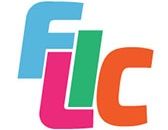A practical guide to in-app purchases

In-app purchases have become a cornerstone of mobile business strategy. Understanding how to utilize them effectively can make or break your app's success. By the end of this guide, you'll have a comprehensive understanding of in-app purchase types, how to promote them, and the costs to consider.
Whether launching a new app or boosting an existing one, you need to understand in-app purchases (IAPs). Integral to several app categories, IAPs refer to supplemental, paid offerings inside your app, such as additional features, premium content, or subscriptions. In addition to being an essential tool in app monetization, IAPs improve your app’s engagement.
Apps are a feasible source of digital business, as most Finns pay for mobile experiences. The app market is increasingly competitive, however. According to Qvik’s 2023 mobile insights study, most Finns limit their spending to 1-3 services. Perfecting and promoting your offerings is thus crucial to getting your app a piece of the pie.
Download the report: Qvik Insights – What do your users want? Building mobile business on facts 2023
By the end of this guide, you’ll be able to make informed decisions for your in-app strategy. Let’s dive in!
Different types of in-app purchases
A successful IAP strategy is user-centered. It adds value in ways that cater to the needs and preferences of your audience. Here’s a complete breakdown of the sorts of IAPs currently available.
Consumable purchases
Consumables are items that can be used once. Typical examples are in games where users can buy virtual currencies, power-ups, and special abilities.
Non-consumable purchases
Non-consumables are one-time purchases that permanently enhance the user experience. These include, e.g., unlocking added functionality or an ad-free experience.
Auto-renewable subscriptions
Auto-renewable subscriptions allow users to purchase access to services for a set period, automatically renewing until canceled. Examples include different entertainment services, such as Spotify, Disney+, or Netflix, and premium features in productivity apps, such as Headspace. Over 50% of Finns prefer to pay with an auto-renewing subscription.
Non-renewing subscriptions
Non-renewing subscriptions provide access to services for a limited time but do not automatically renew. These are suitable for seasonal content and temporary access, like a sports season pass or a fitness program.
Marketing strategies for in-app purchases
Once your in-app purchases are up and running, it’s time to promote. To make the most out of your marketing budget, verify once more that you have these fundamentals in place:
- Make sure your value proposition is clear. Users are more likely to spend money if they understand what they’re getting.
- Ensure a seamless purchase flow. Complicated processes can deter potential customers, so buying should be as smooth and simple as possible.
- Have a process for collecting and using user feedback to mold your offering. Monitor sales and use data – this way, you’ll meet user demands more accurately.
Great! Now – for best sales results, you must actively promote. Below, we’ve listed the best marketing strategies for in-app purchases and subscriptions.
Marketing in-app purchases
Optimize your store listings
To attract new users from the store, optimize your app’s listing with high-quality screenshots and descriptions. Highlight the added value of in-app purchases in clear and enticing ways.
Boost with notifications and UI elements
Promote available purchases using in-app notifications and custom UI elements. Highlighting limited-time offers or exclusive items can encourage users to make a purchase.
Utilize holidays and special events
Leverage holiday seasons and special events by offering themed items and discounts.
Marketing subscriptions
Give free trials and introductory offers
To attract new users to your subscription service, offer them discounted or free trials. Offers and trials are lucrative for converting free users into paying subscribers.
Distribute discount codes in your marketing channels
Distribute discount codes through social media or email to offer subscription price reductions. Reductions are especially useful for re-engaging past subscribers or rewarding loyal customers.
Offer temporary promotions
To retain your existing users who are considering cancellation, offer temporary promotions such as a month of service at a reduced rate or access to additional premium content.
Consider tiered pricing
Implementing multiple subscription tiers caters to different needs and budgets, increasing your app’s appeal to a broader audience. Differentiate the benefits and features of each tier clearly.
Restrictions to in-app purchases
The world of in-app purchases is versatile, but not everything can be sold in-app. The restrictions protect users from deceptive practices and ensure a fair market environment within each app store. Knowing the limits of IAPs is important to comply with platform guidelines.
Here’s a detailed look at the limitations for in-app purchases.
In-app purchases have to be used inside the app
Apple and Google limit in-app purchases to digital goods and services, and selling physical items is not allowed. Physical products or services must be processed using external payment systems.
Apple’s family sharing only covers subscriptions and non-consumables
Apple’s Family Sharing feature lets up to six family members share access to apps, music, movies, and books. However, only non-consumable purchases and subscriptions can be shared. Consumable items are intended for use by a single user.
Store-specific restrictions and policies
Apple and Google have strict guidelines to ensure that in-app purchases are safe and benefit users. Google Play requires that digital goods and services sold through the Google Play Billing system adhere to specific usage policies. Apple prohibits redirection to external stores or services.
Commission structures for in-app purchases in the EU
Last but not least, you need to consider the costs of the in-app purchases you’re offering. Due to different commission structures offered by Apple and Google, choosing the right platform can play a big role in achieving your goals.
While Apple recently renewed its rates to align with the EU’s Digital Markets Act, Google offers a reduced subscription rate and opportunities beyond their own billing system.
Apple’s commission structure
Apple renewed its commission structure for apps distributed in the European Union in March 2019 as part of the company’s compliance with the EU’s Digital Markets Act. The new program allows businesses to choose between the traditional commission rates and new, reduced rates.
Traditional commission structure
Historically, Apple has charged a 30% commission on all paid apps, in-app purchases, and subscriptions. Businesses in Apple’s small business program have paid a reduced commission rate of 15%. Businesses that earn $1 million or less in annual proceeds (across all their apps) have been eligible to enroll in the small business program.
New reduced commission structure
Under the new terms of the Digital Markets Act, Apple offers a reduced commission rate of 17% for all apps. In the new structure, businesses using Apple’s own In-App Purchase System are charged an additional 3%, making the total commission 20%.
Businesses in the small business program pay a further reduced commission of 10%. The same additional 3% fee applies for small businesses using Apple’s In-App Purchase System, totalling 13% in fees.
However, Apple’s Core Technology Fee (CTF) is part of the new structure. It imposes a €0.50 charge per annual install for apps that exceed one million downloads per year in the EU. This fee applies per user account for the first install in a 12-month period, whether the app is sold inside the App Store or through a third-party marketplace. Notably, there are exemptions to this fee:
- No revenue exemption: Developers who create free apps without any form of monetization – whether through sales, advertising, or otherwise –are not required to pay the CTF. This exemption is designed to support students, hobbyists, and other non-commercial developers who may create popular apps without a revenue model.
- Small developer on-ramp exemption: Small developers with less than €10 million in global annual business revenue are given a 3-year grace period where they are exempt from the CTF, even if their apps exceed one million first annual installs. The initiative aims to assist small developers in scaling their operations without the immediate financial burden. If such developers grow to earn between €10 million and €50 million during this period, the CTF will apply after crossing one million installs, capped at €1 million per year.
While the commission rates are lower in Apple’s new structure, businesses should beware of the CTFs, which can amount to substantial costs. Apple provides a fee calculator tool to help companies predict their costs under the new structure.
Google’s commission structure
Google’s commission structure differs from Apple’s in several ways. Below is everything you need to know about the app fees and rates in Google Play.
Standard commission rate
Google Play typically charges a standard commission of 30% on in-app purchases for all apps. This rate applies to both digital goods and subscriptions.
Reduced rate for subscriptions
However, after the first year of auto-renewing subscriptions, Google reduces the commission to 15%. This policy aims to encourage developers to maintain long-term relationships with subscribers.
Promotions and discounts
Google also occasionally offers promotional rates and special programs that can temporarily reduce your commission rate. Businesses should stay updated with Google’s latest offerings to take advantage of these opportunities.
Alternative billing options
Recently, Google has also begun allowing businesses to implement alternative in-app billing systems, offering a significant advantage. Alternative systems can reduce or entirely bypass standard commission rates. However, remember to factor in all integration and operational implications before settling on one.
Conclusion
In-app purchases are an essential tool for monetizing mobile apps, and using them effectively can determine the success of your app.
However, navigating the in-app purchase landscape requires a strategic approach. To achieve success with in-app purchases, you need to consider the type of your business, target audience, and the opportunities and limitations of in-app purchases on both Apple’s and Google’s platforms. You must understand the different types of IAPs available, including their marketing strategies and cost structures, to make choices that best support your goals.
All in all, the investments you make in perfecting your in-app offerings will be worthwhile in getting your share of the increasing consumer spend in mobile.
Is your mobile app giving you the commercial results you want? If not, take a look at our Mobile app success offering package, designed to make your app a commercial and consumer success with minimal investment.
AUTHOR:
Andrei Sadovnicov
Senior Software Engineer, Team Lead
Qvik






















































